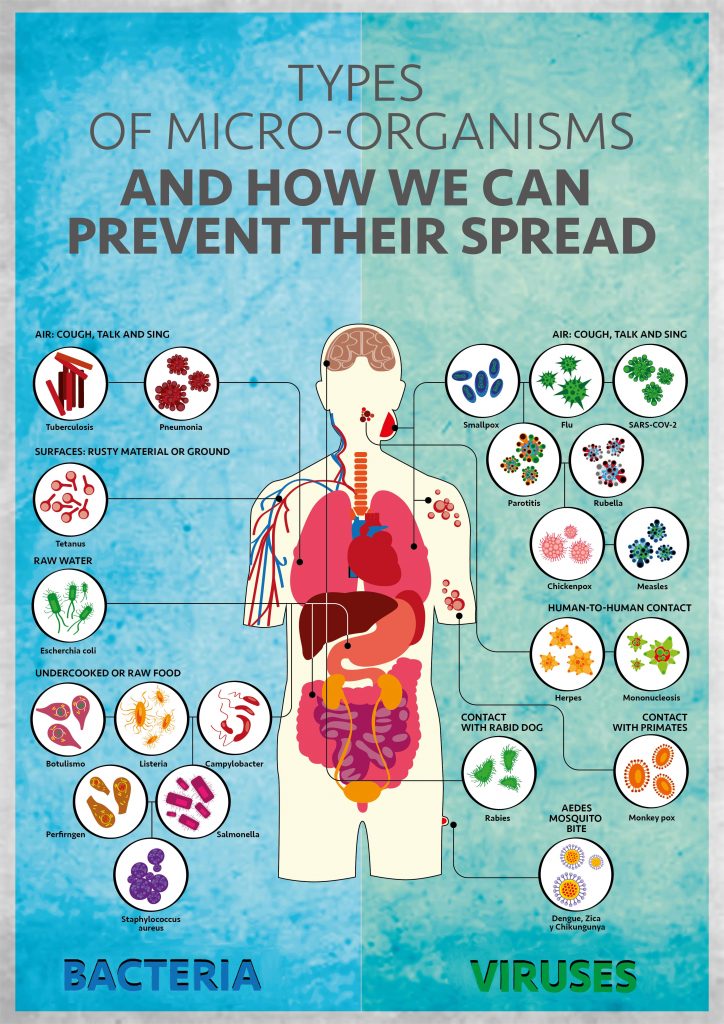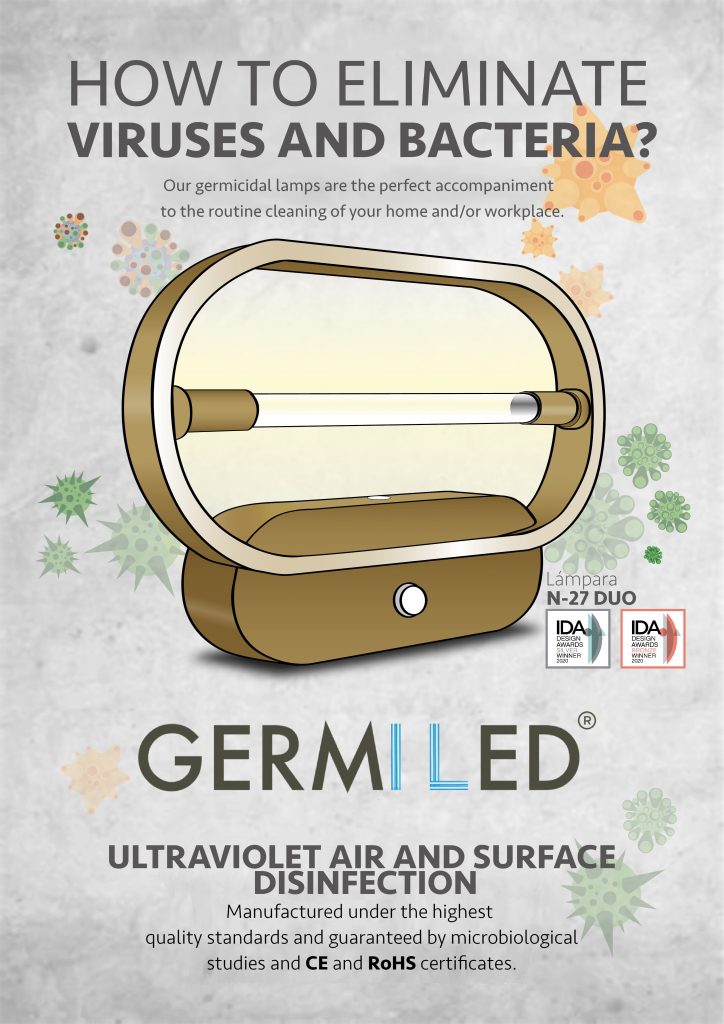We usually hear about viruses, bacteria and fungi, but do we know how to distinguish between them? Most micro-organisms, as their name suggests, are not visible to the naked eye and can cause infectious diseases in humans.
Not all micro-organisms are bad for us, in fact, some of them are beneficial, as is the case of our intestinal microbiota, which is like a protective shield for our body. Even so, within the different groups we find many human pathogens, and the best way to avoid contagion is to know about them and how to fight them.
PART 1: BACTERIA AND VIRUSES
– BACTERIA:
They are usually transmitted from person to person, by contact with spoiled materials or by consuming contaminated food or water. They are single-celled germs that multiply rapidly. They can emit toxins, which are harmful chemicals that can cause disease. Some of these agents are always infectious, others are only infectious depending on the area in which they are found. There are bacteria native to the gut, such as Escherichia coli, which when it grows elsewhere can cause disease.

– VIRUS:
The vast majority of them are transmitted via the air, i.e., respiratory, as they necessarily need to reproduce in a cell, which is why they are not usually found in food or water (although some hepatitis is), as they use arthropods as vectors, i.e., as a vehicle for transmission: mosquitoes, flies, ticks, but this does not mean that some bacteria are not also transmitted via these vectors.
- Smallpox: (airborne) now eradicated but very contagious.
- Influenza and Coronavirus: (airborne) can have dangerous complications, but in principle cause what we commonly call a cold.
- Measles, Rubella and Mumps: (airborne).
- Herpes: (by contact), cold sores; (spittle), kissing disease, very typical among adolescents; (airbone), chicken pox, so contagious.
- Rabies: (dog bite) It is advisable to be vaccinated and to avoid contact with wild animals.
- Monkeypox: (by contact), animals.
- Dengue, Yellow Fever, Zika: (from mosquitoes).
How to avoid them?
A decisive factor in avoiding the appearance of these viruses and bacteria is the use of our Germiled products combined with the implementation of a series of habits such as carrying out a correct food preparation and handling process, as well as proper hand and environmental hygiene. On the other hand, we cannot forget vaccines, which are also a key tool in preventing the appearance of these micro-organisms.
Finally, it is important to note that Germiled lamps are not intended for the disinfection of foodstuffs or for water treatment.

